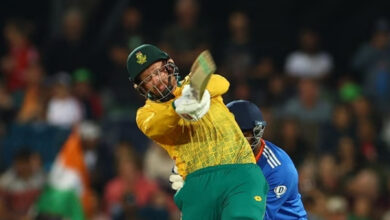India’s pitch ploy backfires in World Cup final as prepared Australia bowlers execute their plans to a T | Cricket-world-cup News

FOR 40 nights since their first win against Australia in Chennai, India strode like the invincibles, but would stumble on the 41st night to a tame defeat. The defeat could be put down to Australianism that always prevails on big moments or just bad luck. There will be a billion post-mortems of the loss, around India, in the coming days but there are enough cricketing reasons to ponder.
At the core of every World Cup final chatter will be an acknowledgment that India, on the final day of the tournament, bumped into a team that had a plan in place, implemented it to a T and hit the ground sprinting. Like a champion side, Australia had done their homework and it showed very early in the game — starting with their skipper Pat Cummins winning the toss and deciding to field.
Australia didn’t go conventional wisdom, they backed their conviction and strength. They also adapted to the alien conditions with amazing ease. The men born and brought up on bouncy tracks seemed at home on the slow and sluggish Ahmedabad pitch.
Ironically, it was India that had consciously chosen the slow track, and that would trip them in the end. As he would do through the tournament, coach Rahul Dravid had come with his support staff three days before the final to inspect the pitch. Not that the pitch was an anomaly in what Ahmedabad has laid out this World Cup, but this track’s sluggishness stood out more than most. This was the same track where India had beaten Pakan last month.
Australia had a general bowling plan for the Indian team and specific field placements for every batsman. The seamers didn’t bowl full, the spinners were not too quick. They also fielded like their life depended on saves and catches.
Australianism: Keeping best for last, a team resolved to win — and won
Australia were aware of the pattern that the matches in Ahmedabad followed. In the first game of the tournament here, the New Zealand spinners and seamers hit the pitch, had the ball stopping on the batsmen, turning a bright English start into a crawl in the middle overs.
Under lights, with a bit of dew acting, the ball came on nicely to the bat and New Zealand scored 283 with nine wickets in hand. The final match of the tournament, to Australia’s delight, played out exactly the same.
With the past behaviour of the pitch at the back of their mind, the Aussie bowling was centred on one single theme: use the pitch, hit the pitch, make the ball stop on the batsman. And they did this with a variety of balls: cutters, slower bouncers, regular bouncers, seam-up on back of length — all designed to accentuate the sluggishness of the pitch.Most Read
1
What happens to your body if you only eat fruits for 72 hours?
2
World Cup final: After defeat to Australia, Rahul Dravid says India ‘gave everything’; unsure about his own future
See More
The fielders would also play their part: getting their throws on one bounce to the wicketkeeper at every opportunity from the outfield. There were two balls being used in the game, one from either end, but both looked like a 100-overs old the end of the Indian innings. Discoloured, soft. The condition of the ball and the turf was also ripe enough for some reverse swing to kick in, and the likes of KL Rahul fell to it.
Much depended on India’s dazzling pace attack that has blinded several teams under lights. They tried; Rohit even gave the new ball to Mohammad Shami, preferring to use the scrambled-seamer Mohammad Siraj for later. Jasprit Bumrah and Shami did their best to rattle Australia, taking out David Warner and Mitchell Marsh cheaply. Bumrah even produced a pearler of a slower off-cutter to take down Smith to reduce Australia to 47 for 3, but that’s when Ahmedabad laughed at the face of the Indians.
That’s when the pitch eased and Australia crossed the line with a lot to spare. India’s pitch ploy didn’t work as the Aussies were prepared for whatever the Indians threw at them. Travis Head ensured all Australian cliches would remain true: that they know how to win big moments, how to shove opposition under pressure, and how to silence home crowds around the world.







